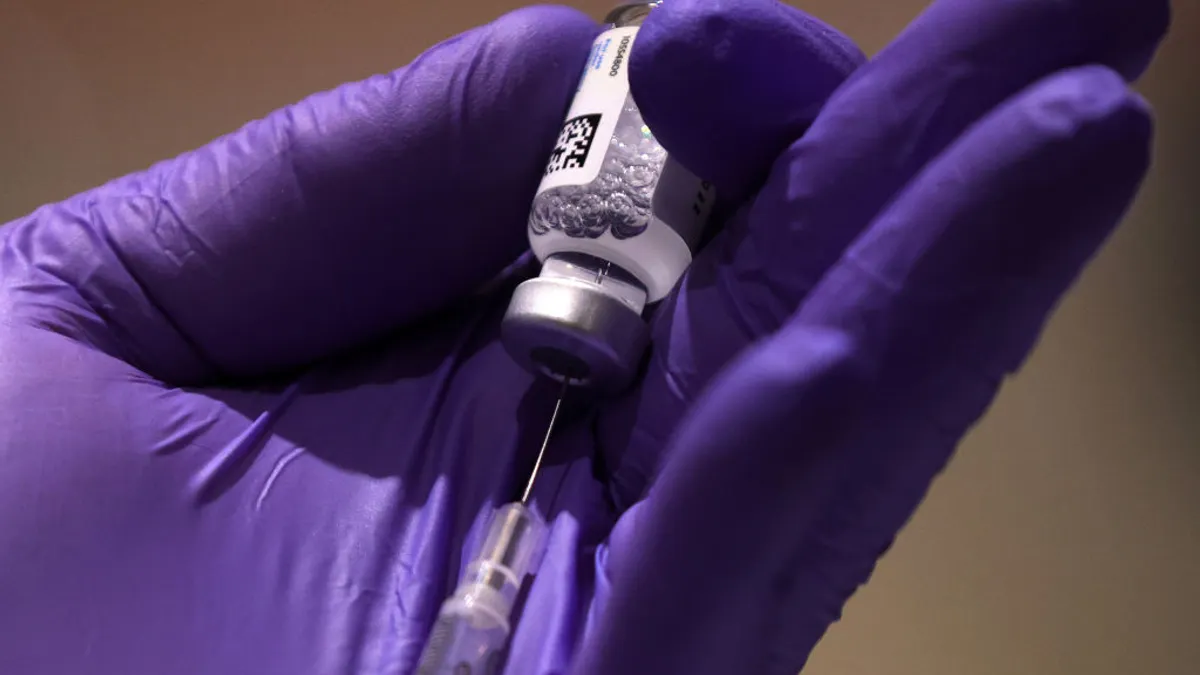Portfolio management in pharma is difficult for many reasons, including a shifting competitive landscape, the push and pull of clinical value and development timelines that reduce long-term market predictability. In fact, from September 2019 to December 2021, 62% of newly launched products underperformed expectations in the first year, according to a recent analysis from industry consultant Trinity Life Sciences.
How can companies mitigate botched market entries and ensure products reach their full potential? The battle starts earlier on in the development process than many companies realize, said Leslie Orne, Trinity’s president and CEO.

“Frankly, the bar keeps going up, up, up on what these drugs need to deliver, and we see a lot of junk making it to market,” Orne said. “When you look at the list of 50-plus FDA approvals [in 2023], we know from pattern recognition that there’s going to be winners and losers, and some who have to work harder for it — we’ve seen increasing difficulty of achieving success.”
The two major reasons assets end up in the “junk pile” are me-too science and a lack of data-driven rigor, Orne said. So, pharmas need to “reverse engineer” the stratification of market launches that leads to winners and losers and be more forward looking at their portfolio from the start.
The ‘junk pile’ beckons
Me-too drugs that join an already thriving treatment landscape have reduced chances of living up to their market potential. The fifth PD-L1 inhibitor or the sixth TNF-alpha inhibitor to enter the market, for instance, have less of a chance to make a difference in medical unmet need.
“If you’re rushing to market to hit clinical thresholds and not being strategic about how that asset is going to differentiate, you’re going to end up with a lackluster launch, even if the science has potential,” Orne said. “That’s the category we want to zero in on the most — how do you take pretty good science, or even great science, and develop it in a way that the commercial market will accept it?”
But being first can also lead to a dead end. Orne pointed to Biogen and Eisai’s debacle in bringing the Alzheimer’s treatment Aduhelm to market. Despite being a highly sought-after asset and the first approved treatment theoretically designed to modify the disease, the market prospect petered out quickly when payers and physicians poked holes in Aduhelm’s clinical evidence, ultimately leading to the companies pulling it from shelves.
“I’m not saying they could have known exactly what the roadmap to success was, but there are probably a couple things they could have done to articulate the value of that asset in a more realistic way to convince payers not to block it,” Orne said. “Biogen is doing amazing science in Alzheimer’s, but they stumbled with the first one, and they could have been more eyes-wide-open about the commercial reality to prevent that.”
That’s where a closer focus on data could help facilitate a more successful launch, Orne said, suggesting a more rigorous approach to traditional market research using tools like AI and machine learning to provide an objective approach.
“We advocate for quick kills — it takes more guts to do that the right way, but some of the best leaders I’ve seen say, ‘It’s time to look someplace else.’”

Leslie Orne
CEO, Trinity Life Sciences
Building (and deconstructing) pipelines
Big Pharma is always on the lookout for new additions through major M&A, bolt-on acquisitions, alliances and asset purchases. And the sector is “bound to grow again” after a yearslong drought wherein pharmas were hunkering down in a volatile market, said Arda Ural, EY Americas life sciences leader.
“Pharma continues to have $1.4 trillion in firepower, and targets are inexpensive,” Ural said, referring to the industry’s dealmaking capacity, as laid out in a recent EY report. “Meanwhile, you get a counterbalance that pharma on the top end is losing $300 million [in patent losses] and that revenue needs to be replenished somehow by the pipeline.”
For example, J&J’s recent purchase of a Numab Therapeutics subsidiary for almost $1.3 billion provides access to an early-stage eczema drug, adding to a portfolio that includes older immunotherapies at the end of their patent protection next year. Numab CEO David Urech told PharmaVoice the bispecific antibody was getting attention from another “leading pharma company,” as well, highlighting the need for pipeline replenishment across Big Pharma.
But while additive deals to build pipeline prowess fulfill an urgent portfolio need for large pharma companies, the flipside of cutting candidates before sinking too much into costly development can prove just as important for the go-to-market batting average, according to Orne.
And pharma giants have recently been attentive to that need, Orne said. From Sanofi to AstraZeneca to Takeda, companies are having commercial conversations at earlier stages and reprioritizing pipelines as a result. For instance, Sanofi’s 2023 decision to pull a late-stage candidate for myasthenia gravis came about “after careful evaluation of the emerging competitive treatment landscape in MG,” according to a company release.
“[Pharmas] are trying to get better at holding themselves accountable to the thresholds and the criteria they’ve set,” Orne said. “We advocate for quick kills — it takes more guts to do that the right way, but some of the best leaders I’ve seen say, ‘It’s time to look someplace else.’”





















